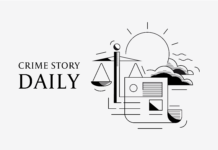This is a curated selection of highlights from Crime Story Daily this week.
On the criminal justice policy front: As the Supreme Court opens its new term, Law360 highlights five upcoming cases that could affect Americans’ civil and criminal rights, ranging from immigration cases to sentencing disputes. A piece from Time focuses on jail-based disenfranchisement. Most of the 750,000 people held in US jails are legally eligible to vote; but due to widespread misinformation about eligibility, myriad barriers to voter registration, and challenges to casting a ballot, many find it practically impossible to exercise this constitutional right. A report from the Prison Policy Initiative discusses the barriers to jail voting in greater detail, offering recommendations for advocates, policymakers, election officials, and sheriffs to ensure that people in jail are able to cast their ballots. A ProPublica analysis focuses on Florida, where the gutting of a landmark law has left few felons likely – or able – to vote. In a presidential election marred by voter suppression tactics, the weakening of Amendment 4, which restored voting rights to as many as 1.4 million Floridians with felony convictions, “may constitute the biggest single instance of voter disenfranchisement.” Like the poll taxes of the Jim Crow era, the restrictions have especially hit Black Floridians, who make up a disproportionate share of felons and register overwhelmingly as Democrats. Finally, in a piece for USA Today, former US attorneys general Alberto Gonzales and Loretta Lynch reiterate the urgent need for criminal justice reform, outlining a series of policy recommendations to help slow the spread of COVID-19.
In muckraker/watchdog reporting: In an interview with NPR, writer John J. Lennon discusses his experience of catching the coronavirus while incarcerated at Sing Sing Correctional Facility in upstate New York, where anxiety and isolation, he says, make prison “like a torture chamber.” A new analysis by The Marshall Project focuses on compassionate release. They found that in the first few months of the pandemic, as the virus quickly spread behind bars, federal prison wardens denied or ignored more than 98% of compassionate release requests, including many from elderly or medically vulnerable prisoners. Though more than 10,000 federal inmates applied for compassionate release, officials granted a mere 156 requests. Nearly 15,600 federal prisoners have contracted coronavirus, and 133 have died. A Reuters investigation reveals how the US Justice Department disarmed its own effort at police reform. The piece focuses on so-called “pattern or practice” investigations, the primary federal program designed to address police abuse. In nearly four years, Trump officials have opened just one police pattern or practice case, compared to at least 20 opened during the eight years of the Obama administration. And a piece from Mother Jones asks, “Why won’t Democratic mayors crack down on the cops?” In liberal cities across the country, from Portland to NYC, liberal mayors are “defying their citizenry in the streets, going to war on behalf of cops who loathe them, sometimes at the expense of their popularity.” Why? The answer, the piece argues, is that even the most “progressive” mayors answer not to their constituents but to the very rich: the Fortune 500 CEOs whose money can win or lose an election, and who strongly oppose defunding the police.
In complex crime storytelling: In a piece for Esquire, written in 1961, the novelist William Styron reflects on capital punishment, the “cruelest dilemma of our time,” America’s broken legal system, and the true meaning of justice through the lens of one little-known case: that of Benjamin Reid, a poor, developmentally disabled Black man who was sentenced to death in Connecticut at the age of 19. Styron ultimately condemns the death penalty as both an “outrageous hypocrisy” and an irredeemable moral wrong: “The fact remains that all of us, to some degree, are spiritually and physically diminished by the doctrine of legal vengeance, even though it manifests itself as nothing more than a chronic, insidious infection beneath the public skin.” The Washington Post reports from Oakland, California, where, with crime rates spiking, protesters calling to defund the police, and the city budget ravaged by the pandemic, “ideology and practicality are on a collision course.” And a piece from Time focuses on David Ruggles, the Black New Yorker who led the charge against police violence in the 1830s.
And in culture/true crime: Louder Than A Riot, a new podcast from NPR, reveals “the interconnected rise of hip-hop and mass incarceration.” From Bobby Shmurda to Nipsey Hussle, each episode explores one artist’s story to examine a different aspect of the criminal justice system that disproportionately impacts Black America. More than just music, “Louder Than A Riot” is a story about power: “the power the industry wields over artists, the power of institutional forces that marginalize communities of color, the power of the prison industrial complex and the power dynamics deep-rooted in the rap game.” Highsnobiety highlights “The Other Side,” a new exhibition of collaborative works by the artists William and Steven Ladd and inmates in the NYC Department of Corrections. Featuring drawings, paintings, and sculptural wall works made in collaboration with inmates, as well as a series of installations depicting a jail cell, metal detector, and surveillance booth, the show seeks to amplify the voices and perspectives of incarcerated people and to shed light on their experiences behind bars. And the Los Angeles Times goes inside “the once-controversial trend that took over true crime TV”: the subjective, highly stylized crime scene reenactments, pioneered by Errol Morris in 1988’s “The Thin Blue Line,” that have since become a staple of the genre.

